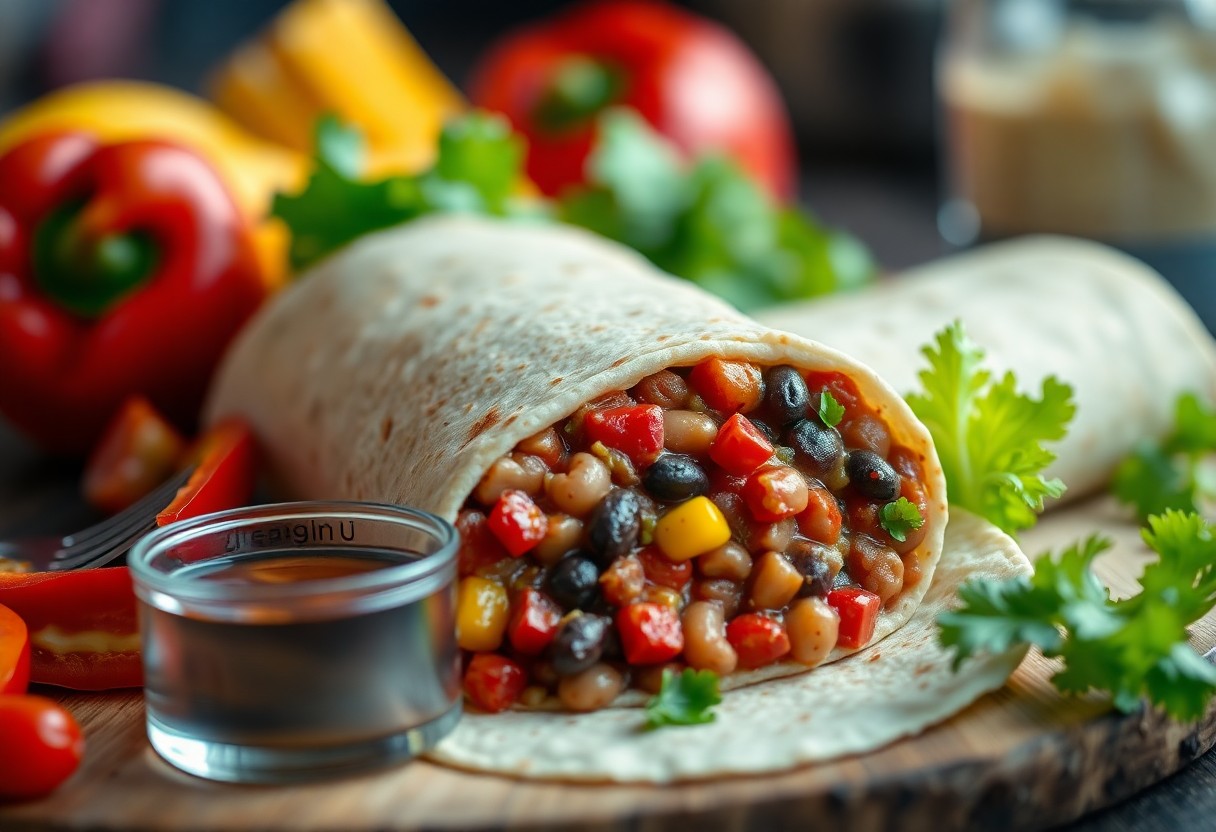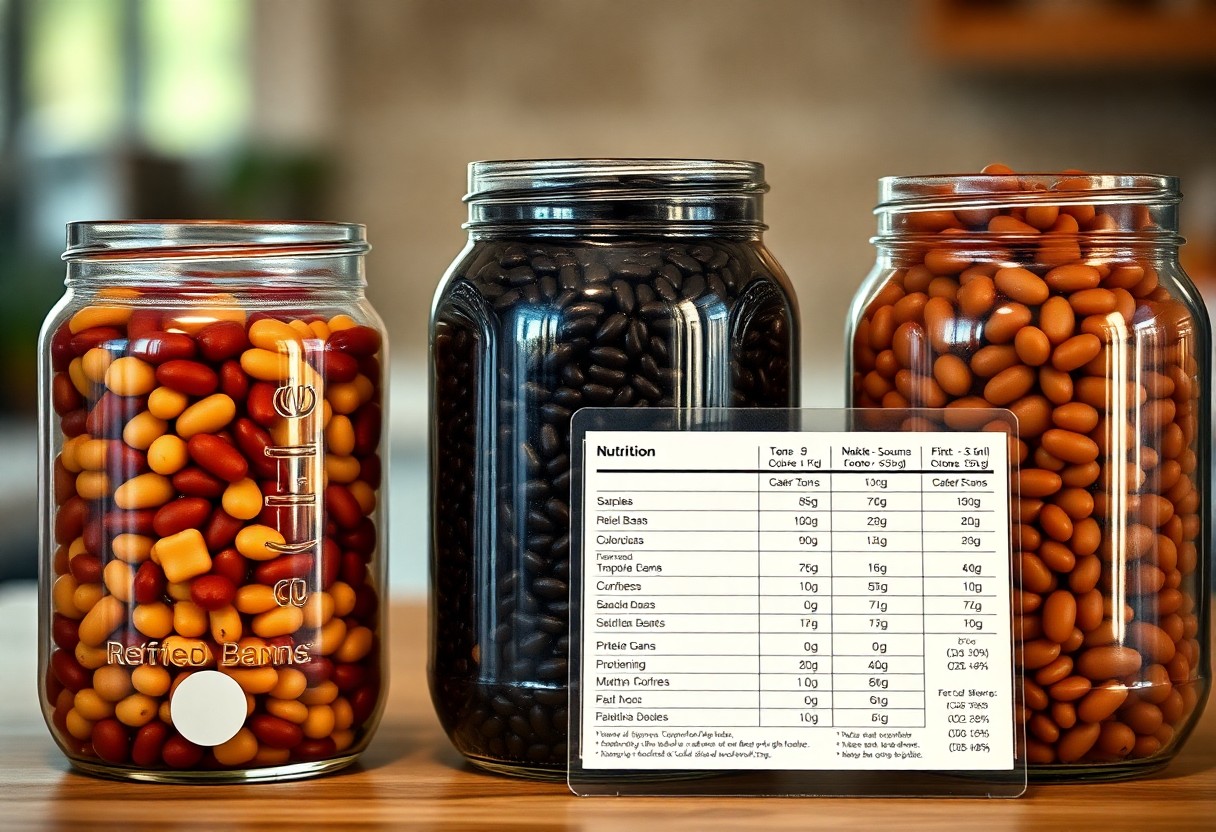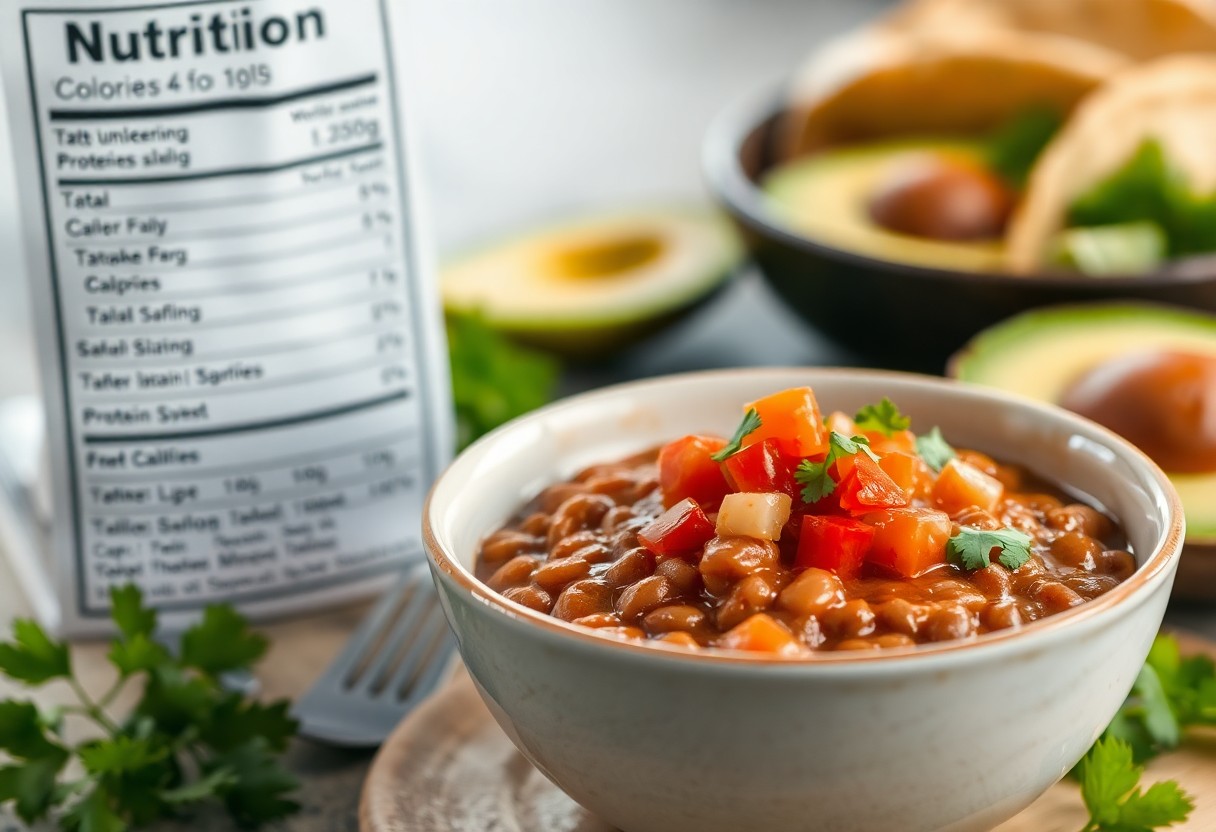Nutrition is an necessary aspect of a balanced diet, and refried beans offer a wealth of benefits. Packed with protein and fiber, these beans are not only satisfying but also versatile in your meals. Understanding their calorie content and nutritional profile can help you incorporate them wisely into your diet. In this post, you will discover the nutritional value of refried beans and find healthy ways to add them to your meals for better health and enjoyment.

Key Takeaways:
- Refried beans are low in calories and a good source of protein, making them a nutritious addition to meals.
- They provide significant fiber, which aids in digestion and helps maintain a healthy weight.
- Incorporate refried beans into dishes like tacos, burritos, and salads for added flavor and nutrients.
Nutritional Profile of Refried Beans
Refried beans offer a balanced mix of nutrients, including carbohydrates, protein, and dietary fiber. Rich in various vitamins and minerals, they contribute to your overall health. For detailed refried beans nutrition: calories, carbs, GI, protein, fiber, fats, you'll find these legumes particularly beneficial in vegetarian and vegan diets while playing a versatile role in many culinary traditions.
Calories in Refried Beans
A typical serving of refried beans contains approximately 115 calories, providing a satisfying yet low-calorie option for meals. This makes them a favorable choice for individuals looking to manage their weight without sacrificing flavor or nutrition.
Protein Content
Refried beans are a solid source of protein, containing around 7 grams per half-cup serving. This makes them an excellent plant-based protein choice, supporting muscle health and helping to keep you feeling full and satisfied.
Refried beans not only provide protein but also contain vital amino acids. Combining them with whole grains, such as brown rice or corn tortillas, enhances the protein quality. This makes refried beans an integral part of a complete meal, especially for those following a vegetarian or vegan diet, as they help meet daily protein needs effectively.Health Benefits of Refried Beans
Including refried beans in your diet offers numerous health benefits, particularly in enhancing nutrient intake and promoting overall well-being. They are known for supporting digestive health, maintaining steady energy levels, and contributing to heart health due to their high fiber and protein content.
Dietary Fiber
Refried beans are an excellent source of dietary fiber, delivering around 6-8 grams per half-cup serving. This fiber aids digestion, promotes a healthy gut, and helps maintain stable blood sugar levels, making you feel fuller longer and reducing unhealthy snacking.
Vitamins and Minerals
Rich in imperative vitamins and minerals, refried beans provide significant amounts of folate, magnesium, and potassium, each playing vital roles in your body's metabolic functions, muscle contractions, and overall cellular health.
Folate, for instance, is crucial for DNA synthesis and repair, making it particularly important for pregnant women and those looking to support reproductive health. Magnesium supports over 300 biochemical reactions in the body, including energy production and muscle function. Potassium helps regulate fluid balance and muscle contractions, which is imperative for maintaining cardiovascular health. Incorporating refried beans into your meals ensures you receive these nutrients in an accessible and tasty manner.
Ways to Incorporate Refried Beans into Your Diet
Incorporating refried beans into your diet is simple and versatile. You can use them in burritos, tacos, or quesadillas for a protein boost. They also work well as a spread on toast or as a base for a hearty dip, combining them with spices for added flavor. Mixing refried beans into soups or stews enhances their texture and nutrition, while adding them to salads can elevate your meal’s fiber content. Explore these options to make refried beans a staple in your culinary routine.
Recipes and Meal Ideas
Enhance your meals with easy refried bean recipes. Try a classic bean and cheese burrito, layering refried beans with shredded cheese and your favorite toppings. For a quick meal, prepare a refried bean quesadilla with tortillas and vegetables, grilling until crispy. You can even add them to chili for extra creaminess or serve as a side dish seasoned with garlic and cumin for a flavorful bite that complements any entrée.
Pairing with Other Foods
Pairing refried beans with other foods can enhance their flavor and nutritional value. Consider combining them with brown rice for a complete protein source, or serve alongside grilled chicken for a balanced meal. Adding fresh toppings like avocado, salsa, or cilantro further enriches their taste and health benefits.
Integrating refried beans with a variety of foods offers numerous health advantages. The fiber from beans complements whole grains like quinoa or brown rice, creating a filling meal that keeps you satisfied. When paired with vegetables, they provide necessary vitamins and minerals while maintaining a low-calorie profile. You can also pair them with healthy fats, such as avocado, which contributes to heart health. This combination not only enhances flavor but also ensures your meal delivers a well-rounded array of nutrients you need for a healthy lifestyle.

Comparison with Other Bean Varieties
Comparative Nutritional Profile of Beans| Bean Type | Calories per 100g |
|---|---|
| Refried Beans | 120 |
| Black Beans | 100 |
| Kidney Beans | 127 |
| Pinto Beans | 118 |
Nutritional Differences
Nutritionally, refried beans often contain added fats, which can increase calorie content compared to other beans like black or kidney beans. For example, refried beans may have around 120 calories per 100 grams, whereas black beans contain only about 100 calories. This fat content can also contribute to higher protein levels, making refried beans a substantial protein source in your meals.
Health Implications
While refried beans provide healthy protein and fiber, their nutritional profile can vary significantly based on preparation. If prepared with excessive oils, they may contribute to higher sodium and fat intake, which can affect heart health. Opting for homemade versions allows you to control the ingredients, enhancing the health benefits while maintaining flavor.
Refried beans can be enjoyed in moderation, balancing their potential benefits with a mindful approach to ingredients. Choosing low-fat methods, such as using olive oil or omitting unnecessary fats, allows you to reap the advantages of their protein and fiber without excessive calories. Additionally, combining refried beans with vegetables or whole grains can lead to a more nutritious and satisfying meal.
Common Misconceptions
Myths about Refried Beans
Many assume that refried beans are unhealthy due to their preparation methods or association with high-fat cuisines. In reality, the nutritional profile significantly depends on the ingredients and how they are prepared. Not all refried beans are loaded with fat; many can be made with minimal oil or even with healthy spices. For a balanced approach, consider exploring healthier versions of Refried Beans that emphasize nutritious ingredients.
Clarifying Nutritional Value
Nutritionally, refried beans are a good source of protein, fiber, vitamins, and minerals. A typical serving packs about 120 calories, with around 8 grams of protein and 6 grams of fiber, promoting digestive health. Many people mistakenly think they are purely a carbohydrate source. While they do provide carbohydrates, their real value lies in the balance of macronutrients that can contribute to your overall nutrition.
To further dispel the myths surrounding refried beans, consider that they are often fortified with various spices and ingredients that enhance their nutritional completeness. For example, when prepared with low-fat options and additional vegetables, they can become even richer in vitamins such as B-complex and minerals like iron and magnesium. Knowing the right preparation methods can elevate refried beans from a mere side dish to a nutritious main component in your meals.
Tips for Choosing Healthier Options
Selecting healthier refried beans can significantly enhance your nutrition. Look for options that prioritize whole ingredients and minimal additives. Consider the following tips:
- Choose low-sodium varieties to manage salt intake.
- Opt for brands that use organic beans.
- Check labels for added sugars and preservatives.
- Consider alternatives that use healthier oils, like olive oil.
This will help you make informed choices that align with your dietary goals.
Store-Bought vs. Homemade
Store-bought refried beans can save time but often contain preservatives and higher sodium levels. Making them at home allows you to control the ingredients, ensuring a healthier outcome. You can customize flavors with spices and herbs, making it easier to suit your personal taste preferences.
Reducing Sodium and Fat
Reducing sodium and fat in your refried beans contributes to a healthier meal. You can achieve this by using less salt during cooking or opting for low-sodium canned beans. Incorporating flavor-enhancing spices like cumin or garlic can compensate for reduced salt, while using healthier fats, such as avocado oil, offers a heart-friendly alternative.
Monitoring sodium and fat levels is crucial if you're watching your heart health. Using techniques like cooking dried beans from scratch significantly cuts down on sodium, as canned varieties can contain over 400mg per serving. Experimenting with seasonings can minimize reliance on salt while making your dish flavorful. This will help you enjoy refried beans without compromising your dietary needs.
FAQ
Q: What are the calorie content of refried beans?
A: One cup of refried beans contains approximately 200-250 calories, depending on the preparation method and whether added fats are included.
Q: How much protein do refried beans provide?
A: A one-cup serving of refried beans typically offers about 10-15 grams of protein, making them a good plant-based protein source.
Q: Are refried beans a healthy food option?
A: Refried beans can be healthy, as they are high in fiber, protein, and vital nutrients. Opt for low-fat or homemade versions to reduce added fats and sodium.
Q: What are some healthy ways to incorporate refried beans into my diet?
A: Add refried beans to tacos, burritos, or salads, use them as a dip with vegetables, or spread them on whole-grain toast for a nutritious snack.
Q: Can refried beans fit into a weight loss plan?
A: Yes, when consumed in moderation and balanced with other food groups, refried beans can support a weight loss plan due to their high fiber content, which promotes satiety.







0 Comments